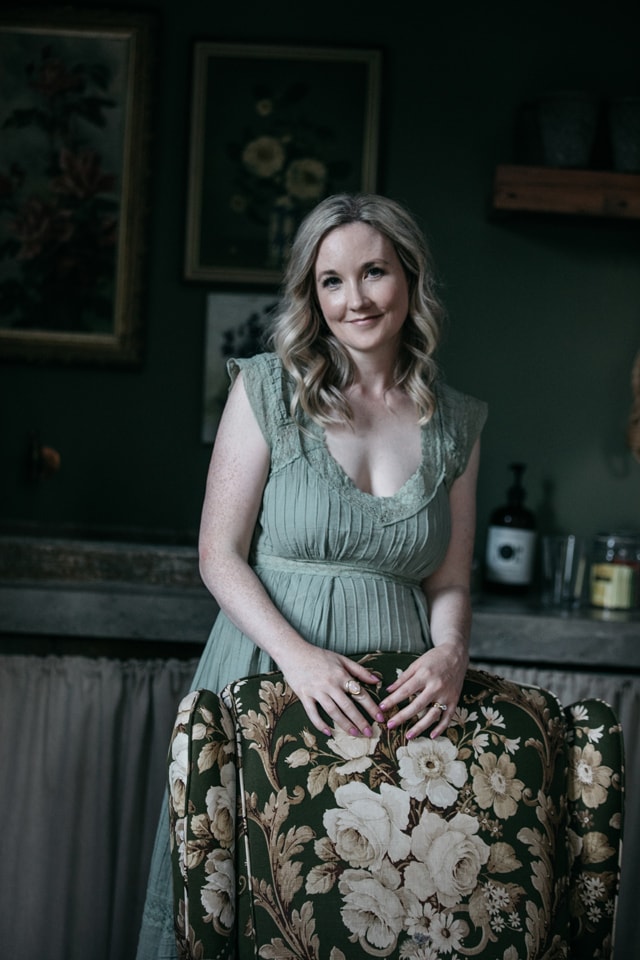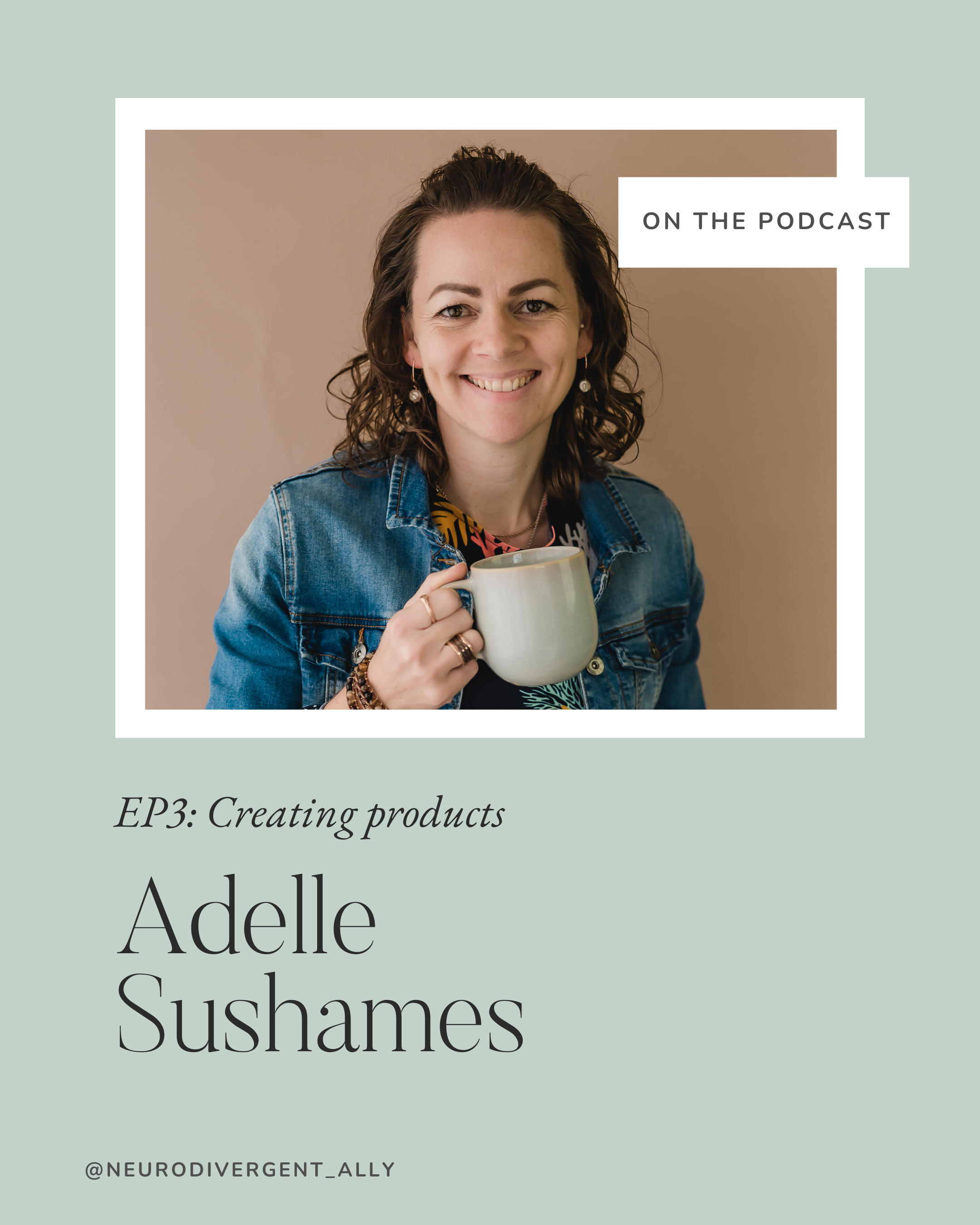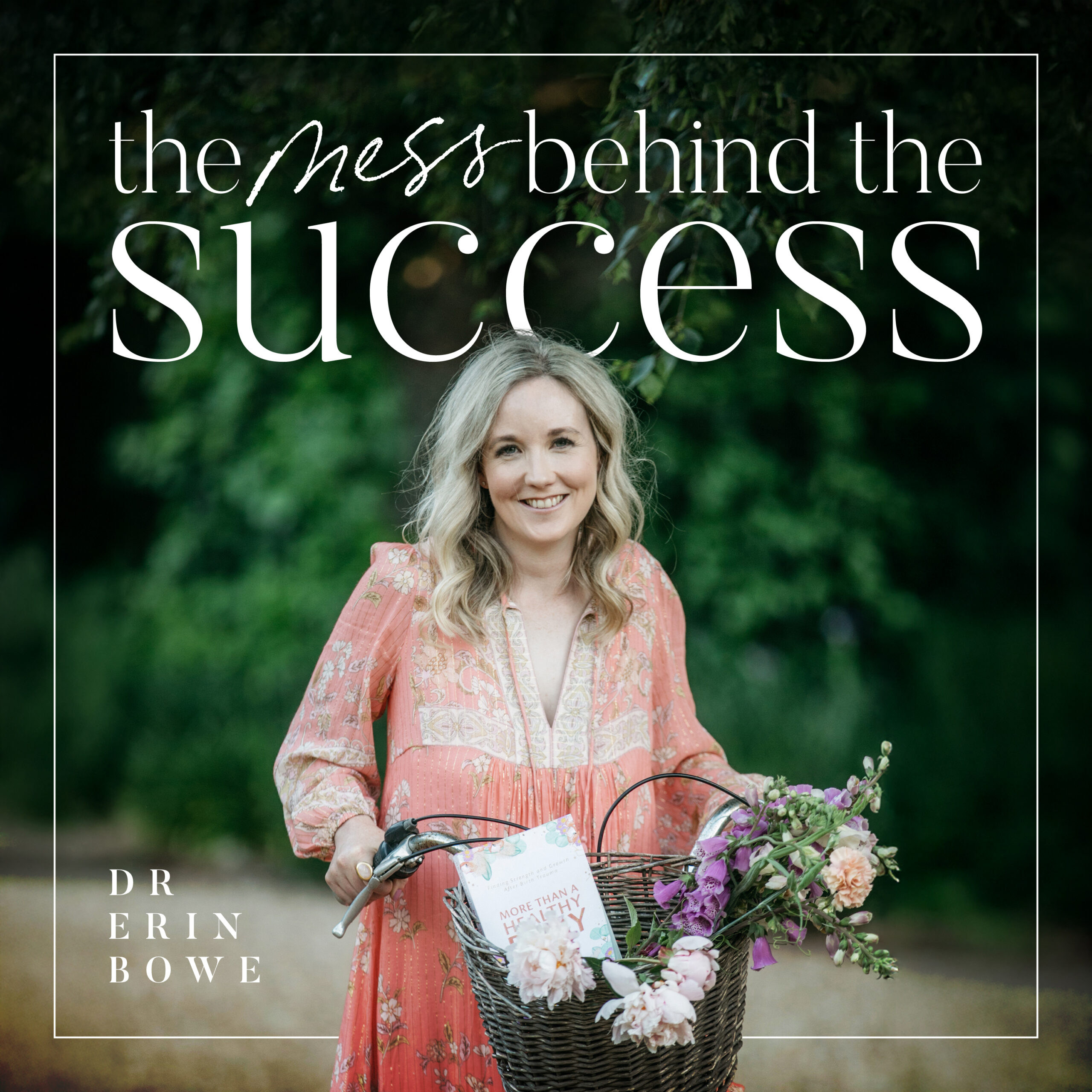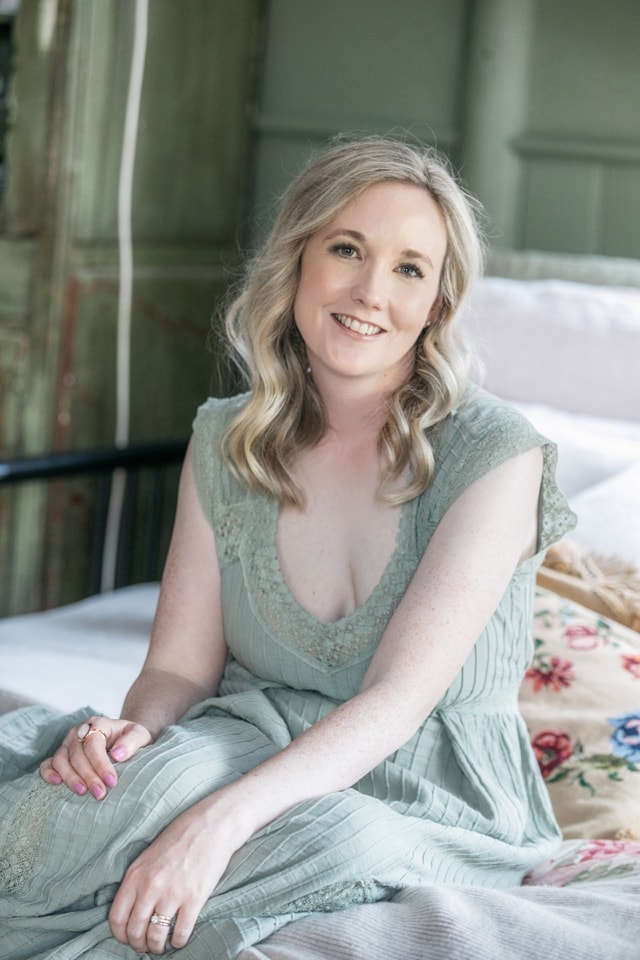Note this is my opinion and my experience, and what I think will 100% contradict other advice you read or have received – that’s the point of this blog! We need to normalize the contradictions. I simply don’t think there’s one way or a proven formula that will work for everyone.
Think about the health industry – some people with depression respond well to CBT, others need IPT, ACT or another behavioural approach. Some people only really find relief with medication, or medication and therapy. Some people have horrid experiences with medication, or have treatment-resistant depression. A decent amount of people are misdiagnosed and don’t have depression but instead are experiencing grief, trauma or an experience better explained by an underlying health condition.
- Sell your course before you attempt to build it VERSUS build then sell or build as you go
SO many people who sell courses will tell you to sell first, then create it. It makes sense – test the market before you waste your time creating, right? If you know you regularly have the time to commit to a project each week, and you work best under pressure then this can work well. I’ve used this method for live teaching and workshops for years. You sell the tickets to the event, make sure you can pay your venue hire and catering and then put your content together. If you don’t sell enough tickets to cover your fees, then it doesn’t go ahead. Simple.
However, I’ve actually NEVER used the sell then create method with an online course that’s pre-recorded. There’s pros and cos to the pre-sell method, and for me, it mostly comes up cons.
Personally, it’s time pressure I don’t want. The idea of creating weekly deadlines for content that needs to be drip fed gives me anxiety. If you’re a primary carer for your child/ren and have limited childcare then anything with a time-limited commitment feels challenging. With two young kids at home, we’ve had times in our house where illnesses are passed back and forth for weeks and I get WAY behind. It’s also easy to get too focused on the marketing that you forget you’ve actually got to create the thing.
It depends on your goals, your time and what your expectations are with platform hosting fees and any other ongoing costs.
- Sell business to business VERSUS sell to individuals
I was told that the best chance of selling Birth Trauma Training for Birthworkers was to sell to organisations – hospitals, doula organisations etc. I spent all of January 2020 contacting organisations and time after time I hit brick walls. I must have close to a hundred emails from midwives and doulas saying they wish their organistions would pay for this training, but they won’t.
So, for me personally, I’ve done much better selling to individuals. This means I generally have students who are compassionate, motivated and want to change birth outcomes instead of waiting for someone else to do it. To my knowledge I still have zero male obstetricians in my group of over 2600 students. The writing is on the wall there.
- Don’t build an email list – it’s for dinosaurs and no one reads them VERSUS your email list is everything
Some of the worst business advice I’ve had was to forget about my email list and focus on social media. One coach assured me “you’re wasting your time on an email list. No one reads it”. They insisted I’d be better off seeking 100 leads a week by “sliding into people’s DMs”. Eww. I know it works for people, but it just felt pushy and gross to me. That, and it contributed to my declining mental health and social media addiction.
You know what? Two years later I still get that coach’s emails and I’m just too stubborn to unsubscribe!
I’ve since discovered that I learn better from women who are crystal clear on what they earn, how many hours they work and are actually honest about how long it took to grow. I’ve learned from 3 Mums who are actual millionaires: Denise Duffield Thomas, Lisa Johnson, and Leonie Dawson. I like reading their emails. I actually read Denise’s emails for 5 or 6 years before I spent a cent with her!
- Don’t make a long sales page – no one reads it VERSUS longer sales pages = more money
I personally don’t read long sales pages. I skim, but that’s just me.
Again, I’ve previously been taught not to bother with a long sales page and you’re best to get people on the phone or sell to them in their DMs.
However, my courses have made more sales when all of the WHO, WHAT, WHERE, WHY, WHEN and HOW is listed for people.
When I used to teach Hypnobirthing, at least half of my clients didn’t even speak to me before booking – they just found a spot in my calendar and paid.
As a busy Mum, this is still me dream way to work. Clients who are decisive and know what they want are my kind of clients.
This is because I answered everything they needed to know on my sales page AND made it easy to book. Some people always want to chat first or ask questions. Some people will still email you asking what the cost is or when the course is even if it’s on your website and that’s ok.
There really is an art to writing and formatting a sales page. These things take tweaking, testing and polishing. It’s a working document that’s never really ‘done’. The sales page is the first place I get my mentees to work on when they come to me and say their courses/coaching packages/products aren’t selling.
- Testimonials are everything VERSUS testimonials are a waste of time, or forbidden and you’ll end up dragged over the scorching hot AHPRA coals
If it’s a video or a photo of an actual person and a useful transformation statement, then YES.
A vague comment with no name that sounds made up? then NO.
All in all, I think a thoughtful and useful testimonial does help with sales. People want to know “is this for me?” and often the best way to communicate that is for people to see themselves in someone else.
Use common sense though!
If you are a gynecologist or counsellor working with infertility for example, then testimonials aren’t going to be appropriate.
A course where you are teaching non-clinical skills (e.g., my Course Creation for the Caring Professions) is fine to seek feedback about teaching and course content.
Are you a midwife of childbirth educator? Then you may, for example, be able to share a birth story.
Every single one of my trainings comes with disclaimers that essentially say: (1) you are responsible for your own mental health, this course is not therapy or a replacement for therapy and (2) participating in my training or watching me demonstrate a technique does not mean you are now qualified to go off and teach the same thing.
- You need a videographer, editor, set and all the bells and whistles to make a professional-looking course VERSUS you can sell a course well with DIY
For my Birth Trauma Training for Birthworkers course, I knew it had to look inviting. Such a harsh, heavy topic was not going to land well with fluorescent lighting and a black power suit. I knew nothing about lighting, sound, how to shoot or edit, so I hired a professional.
In contrast again, I’ve done 3 courses with Leonie Dawson. Hopefully she doesn’t mind me saying so, but on one video her husband was in the background scooping dog poo. Personally, I found it funny as hell. She’s made at least 11 million in revenue by not overthinking.
DIY can look perfectly fine, so long as you know what you’re doing. Maybe you don’t want someone picking up dog crap in the background (lol!), but you likely don’t need to pay someone thousands of dollars either. My last 3 courses are all shot and edited DIY. I’m now experiences and confident enough to create a course entirely by myself (and to teach others how to do DIY, which is what I teach in Course Creation for the Caring Professions).
Practise, practice, practice being on camera. Learn where to look, how to pitch your voice and relax. The most beautifully styled and lit set won’t even be noticed by your students if you are awkward and stiff AF.
- You should put all your energy into social media marketing and put focus there VERSUS social media is actually only a small part of marketing
Don’t assume anything. Look under the hood at your sales traffic. For me, most of my course sales come from word of mouth. Personally, there has been very little evidence that spending time and money on social media helped my sales at all. In fact, the month I stopped using social media I did 7K of sales in 24 hours, which was nuts. You can read about it HERE
Do people go on social media to buy courses? Maybe, but not mine it would seem. I’ve never used Facebook ads for my online courses. I could, but why give money to Zuckerberg when you could give money back to your students? Instead, I use affiliate marketing.
- You NEED a copyrighter and marketing team VERSUS you need to learn to do this yourself
Something I have learned with course creation and book writing is that you absolutely do need to understand how to market. Why the F we aren’t teaching this in our health training is beyond me. My marketing training at uni consisted of “if you are good at your job they will come” and “you want to be in the A section of the yellow pages not the Z section”
You can hire a copyrighter and a marketing team, but no one is going promote your work as well as you can because they aren’t as invested as you are. If you can’t spell or doubt where an apostrophe is supposed to go, then YES pay someone to look over your work. No shame in that. I have no head for math, so I always get someone to check my numbers.
However, you can’t send a copyrighter or marketing team to work with absolutely no insight into how your client thinks. They are going to ask you lots of questions about your client that you need the answers to – what they like and dislike, what would make them keep reading versus click away? You need to understand your clients so well that they feel understood and seen when they land on your website. Start there and work backwards.
- You NEED fancy graphics and visuals VERSUS you don’t
I have mixed opinions on this. A LOT of people are visual learners and I do think a lack lustre website and branding doesn’t help with creating a positive FEELING. People click away from things that don’t make them feel anything – fast.
There is a great deal of psychology that goes into choosing colours and images. What you see when you choose your branding may not at all be what your client sees. For example, one of the early proofs for one of my logos had a flower with petals blowing away. A friend who works in dementia care said that this is a common symbol for decay and thus not ideal for a perinatal business. My hints would be – do get decent headshots and think carefully about what mood youre trying to create.

Unless you are actually an artist, don’t spend hours making your own graphics. Working on your website is a never complete task, so give serious consideration to whether it’s the best use of your time. Better to get your course out and make sales rather than perfecting.
- You should build your 1:1 clients first VERSUS starting with a group
If you’re just starting out and have zero online profile, it might be a good idea to start with some 1:1 clients first. It means you can start building an audience of people to try ideas out on. Many coaching programs teach you to get 1:1 clients before you start putting people into a group.
BUT, there’s just no way I could have seen 2500 birth workers for 1:1 consults in 12 months. If I’d started out that way, it would have been very slow.
It’s also very unlikely that many birth workers would even want to book a 1:1 session with me. Birth workers work irregular hours for one.
Ask yourself what people are actually looking for? Do people need or want that individual support from you? Or are they looking to learn information?
So many contradictions! I guarantee you there will be things I’ve mentioned on this list that won’t work for you. Every course, teacher and audience is different.
As my nurse manager friend always says, treat things like a guideline, not a policy. Some things mostly stay the same (you need to build an audience in a place that’s owned by you), other things change rapidly (like algorithms for social media).





